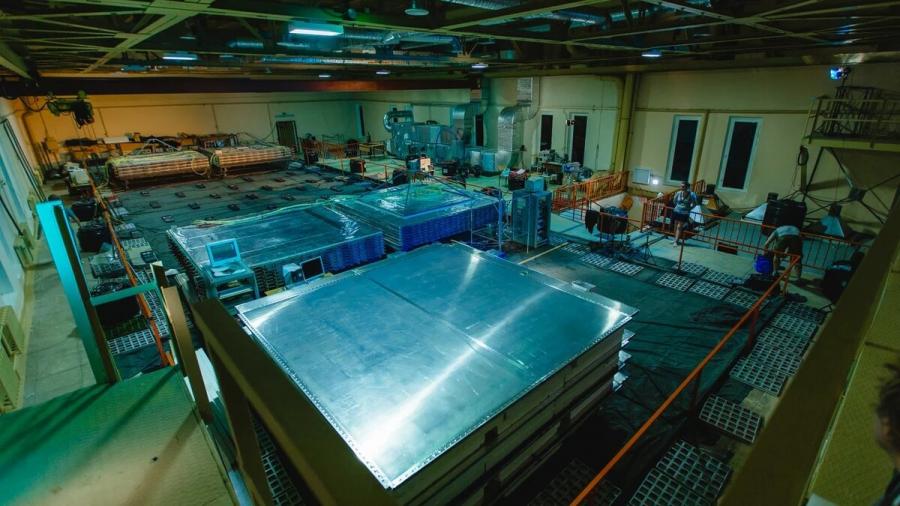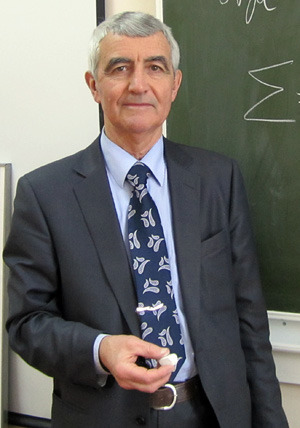October 15, 1962 is considered the date of birth of the unique experimental complex: the day when the Muon Laboratory, the predecessor of NEVOD, received its own premises in the MEPhI building at 21 Kirova Street (now Myasnitskaya Street).

The "surface" part of the NEVOD installation
In the 1960s-70s, the Muon Laboratory for the first time in the world measured the energy spectrum of muons above 1012 eV at large zenith angles and obtained the cross section for the inelastic interaction of muons at energies above 1011 eV.
Today, research is carried out at the unique NEVOD Experimental Complex, built on the territory of MEPhI. The proposal for its creation was developed at the Muon Laboratory in the 1970s. The commissioning certificate for the NEVOD special building was signed on September 30, 1988, and the creation of the detector began.
The first garland of measuring modules in water was installed and began to work in the summer of 1991, and a complete spatial array of such modules was assembled in 1994, and in the same year NEVOD was included in the List of Unique Scientific Installations of National Significance.
“In 1995, we conducted the first experiment in NEVOD and proved that neutrinos can be detected on the Earth's surface under very high background conditions. Before that, it was believed that this was impossible. NEVOD was created as a neutrino detector, but it was not neutrinos that brought us fame, but muons, and in completely unexpected directions. We found that the higher the energy of the primary cosmic particles, the more muons are produced. More compared to what the existing ideas about the interaction of particles allow. A certain excess of muons was observed before us, but we were the first to measure it in the range of four orders of magnitude in energy and saw its continuous growth,” said Anatoly Petrukhin, chief researcher at NEVOD.

Anatoly Petrukhin, permanent head of NEVOD
Solving the "muon puzzle" requires high accuracy in measuring the number of muons and their energy release. Therefore, to fix the number of muons, today a new vertically located coordinate-tracking detector TREK, which has no analogues in the world, is being created from drift chambers with an area of 250 m² - one of its two planes has already been mounted, and the second is planned to be completed in a year. The TREK spatial resolution is 10 times better than that of the existing DECOR detector. At the same time, the Cherenkov water calorimeter with a volume of 2000 m³, which estimates the energy release of muons, will be upgraded. The experiment itself to solve the "muon puzzle" should begin in 2025 as part of the state program to support Russian universities "Priority 2030" (the strategic project "Relativistic Quantum Engineering").
In terms of its capabilities and the scientific significance of the expected results, the NEVOD - DECOR - TREK complex may well claim the status of a unique scientific installation of the "megascience" class.
“We have two main areas. The first is fundamental research: the solution of the “muon puzzle”, and in general, the search for new states of matter at energies inaccessible to modern accelerators. And the second is applied work: monitoring and studying the state of the heliosphere, magnetosphere and atmosphere by detecting the same muons, but of lower energies, which are much more,” emphasizes Anatoly Petrukhin, the permanent head of NEVOD.





